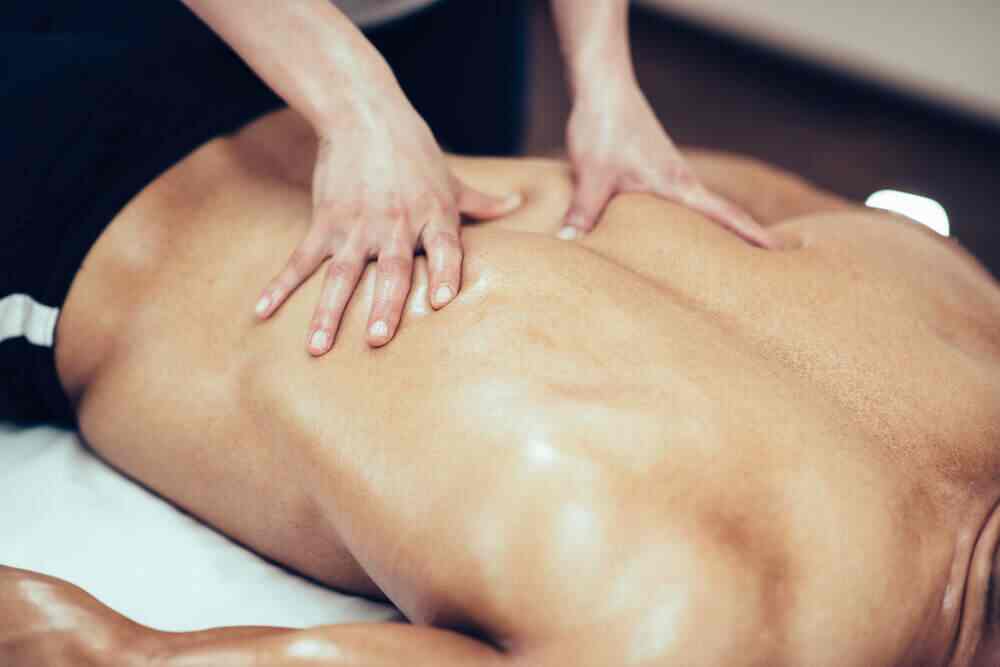Sport massage is a specific type of massage therapy intended to improve sports performance, shield the body from harm, and hasten healing. It entails a blend of methods designed to satisfy the unique requirements of athletes and active people. This tutorial explores the many facets of sports massage, covering its advantages, application methods, and integration into exercise regimens.
Benefits of Sports Massage
- Enhanced Performance: Through increased blood circulation, decreased muscle tension, and improved flexibility, sports massage can help athletes sustain top performance levels.
- Injury Prevention: Sports massage can lessen the chance of sprains and strains by treating tense and imbalanced muscular groups.
- Faster Recovery: Sports massage after an event aids in the elimination of lactic acid and other waste products from the metabolism, lessening pain in the muscles and accelerating healing.
- Pain Relief: Sports massage can provide both short-term and long-term relief from pain brought on by overuse, chronic illnesses, or injuries.
- Improved Flexibility and Range of Motion: Frequent sessions aid in preserving or enhancing range of motion and flexibility, both of which are essential for optimal athletic performance.
- Mental Relaxation: Sports massage therapy’s therapeutic touch also promotes mental relaxation and lowers tension and anxiety levels.
Techniques Used in Sports Massage
- Effleurage: Long, sweeping strokes are used to enhance circulation, warm up the muscles, and get the body ready for deeper work.
- Petrissage: Methods for kneading and squeezing that facilitate the release of tight muscles, enhance the suppleness of tissue, and encourage calmness.
- Friction: Deep, circular motions are used in the muscles, tendons, and ligaments to dissolve scar tissue and adhesions.
- Tapotement: Techniques for stimulating muscles and nerves that involve rhythmic tapping or percussion to improve circulation and muscular tone.
- Vibration: Quick trembling or shaking motions that promote blood flow stimulation and muscular relaxation.
- Trigger Point Therapy: Concentrating pressure on particular muscle regions to relax tension and reduce discomfort in other body areas.
- Compression: Rhythmic pushing motions that ease tension in the muscles and aid in circulation.

Integrating Sports Massage into a Fitness Routine
- Frequency: The amount of activity and particular needs of each individual might determine how frequently they receive sports massages. Weekly sessions may be beneficial for competitive athletes, although bi-weekly or monthly treatments may be preferred by recreational athletes.
- Timing: In athletic massage, time is of the essence. While post-event massages work best in the first 48 hours following an activity, pre-event massages should be booked 24 hours in advance.
- Customization: A skilled sports massage therapist will tailor the treatment to the athlete’s sport, training schedule, and any particular problem areas.
- Combining with Other Therapies: For all-encompassing care, sports massage can be successfully paired with other therapeutic techniques like physical therapy, chiropractic adjustments, and stretching exercises.
Choosing a Sports Massage Therapist
- Qualifications: Make sure the massage therapist is licensed and has had specific training in sports
- Experience:Communication: An excellent therapist will listen to your worries and give you constructive criticism based on your development.
- Reputation: When looking for a trustworthy sports massage therapist, ask coaches or other athletes for suggestions.
Conclusion
Sport massage has several physical and psychological advantages, making it an effective tool for sportsmen and active people. This particular type of massage treatment is essential to any comprehensive fitness and health program because it is intended to improve performance, prevent injuries, and accelerate recovery.
Enhancing performance is one of the main advantages of sports massage. Sports massage promotes blood flow, decreases muscle tension, and increases flexibility through a variety of techniques, including friction, petrissage, effleurage, and trigger point therapy. Athletes are able to train harder and perform better in their chosen sports because of these effects, which help them sustain peak performance levels.
Preventing injuries is yet another important benefit of sports massage. Sports massage lowers the likelihood of common sporting injuries like strains, sprains, and overuse injuries by correcting muscle imbalances, regions of tension, and possible weak points.
Additionally, sports massage facilitates a quicker recovery from strenuous exercise. Post-event massages aim to reduce discomfort and expedite the healing process by eliminating lactic acid and other metabolic waste products from the muscles. Athletes can resume training sooner and sustain their current level of performance without having to take extended pauses for soreness or muscle exhaustion.
Apart from its physiological benefits, sports massage offers noteworthy psychological benefits. A trained massage therapist’s therapeutic touch can lower stress and anxiety levels while encouraging mental calmness and a sense of well-being. An athlete’s focus and concentration can be improved by this mental clarity and decreased stress, which can improve performance and mental wellness in general.
Sports massage can help you reach your athletic objectives and maintain an active, healthy lifestyle, whether you are a weekend warrior or a professional athlete. In order to maximize performance and recovery, professional athletes frequently include regular sports massage sessions into their training regimen. Sports massage has similar preventive and restorative benefits that help recreational athletes and fitness enthusiasts stay active and injury-free.
Sport massage is an invaluable resource for everybody involved in physical activity, to sum up. It is a vital part of a well-rounded exercise and health program because of its many advantages, which include improved performance, injury prevention, quicker recovery, and mental relaxation. You may accomplish your physical objectives, keep your health at its best, and lead a more active and satisfying life by adding sports massage to your routine.

0 Comments